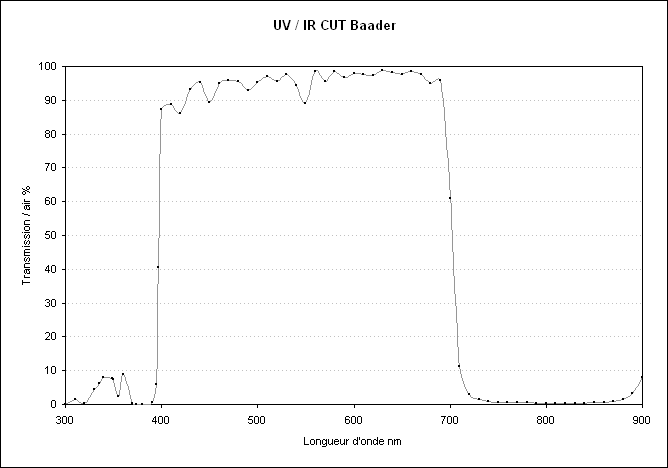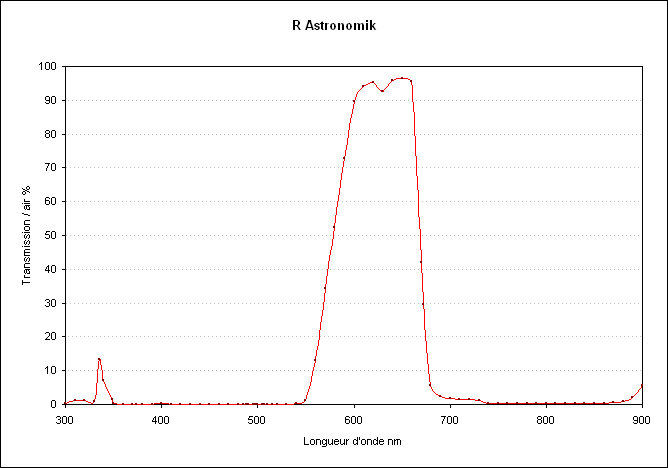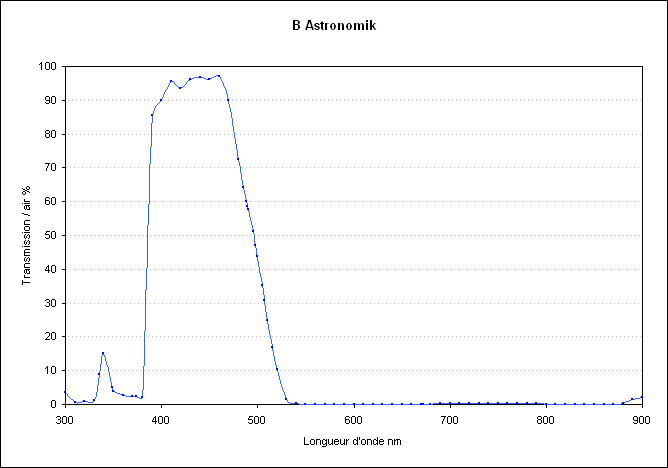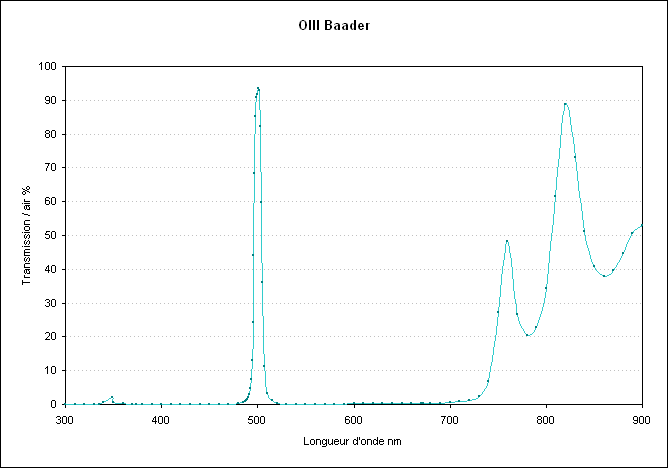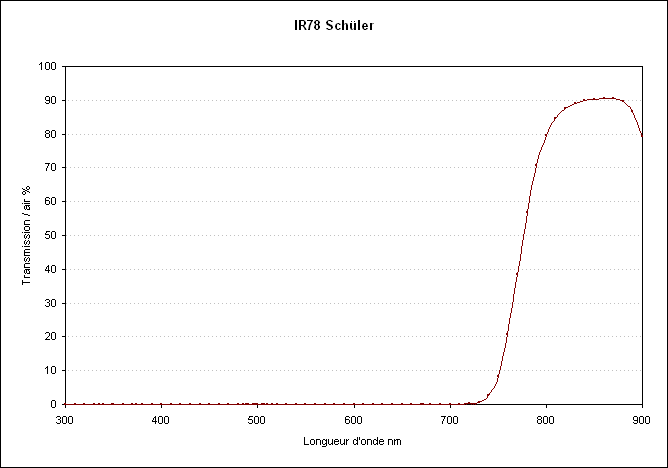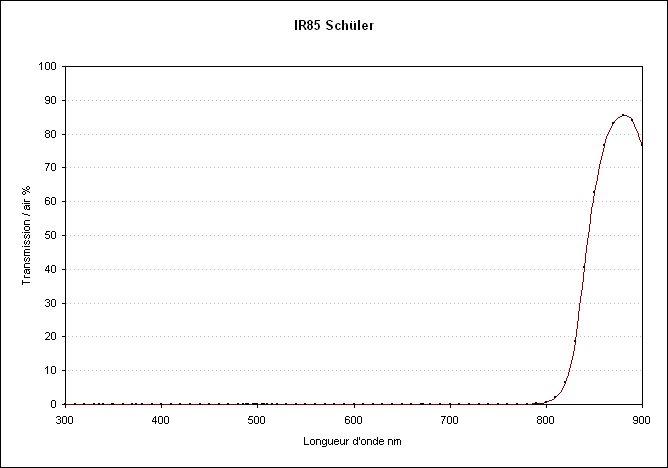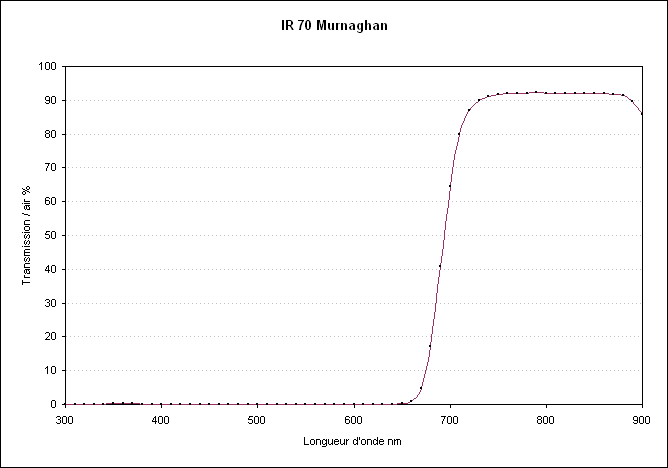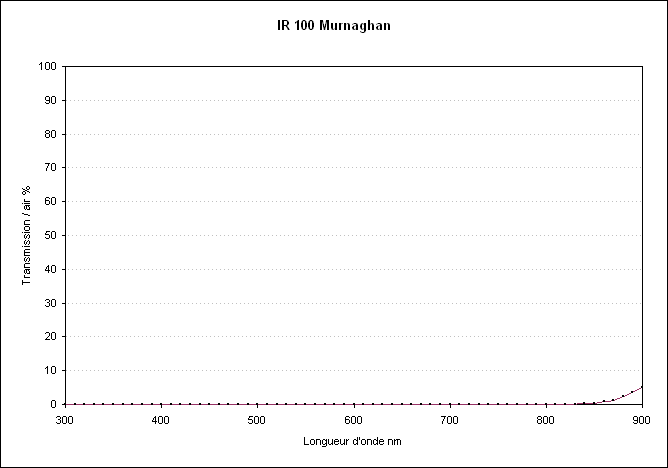
- Theoretical Elements
- SHG with a 115/900
- SHG with 90/1300 refractor (p.1
 )
) - SHG with 90/1300 refractor (p.2
 )
) - Newton 192/950
- Dobson 80/400 'Babydob'
- Ultra-simple solar spectrum
- Misc. electronic layouts
- Misc. optical layouts
- Untransversaliumisator software
- Processing videos software
- "PUSH TO" DIY system

- Radio control RA, Dec & focus

- Focuser 3D pour Vixen 150/750

- Year :
- Synoptic maps :
- Videos
- Maunder's Diagram
- Cycle 23 in images
- Venus Transit 2004
| Filters for astronomy
|
|
Various common usage filters were tested with a spectrophotometer* to determine their transmission with regard to air. The results are presented as transmission curves according to the wavelength from 300 to 900 nm. These curves can probably vary slightly from a filter to the other one. Astronomik filters : L,
R, V, B,
OIII,
CLS
* Dual beam spectrophotometer, holographic grating and photomultiplier. Wavelength accuracy = 0.5 nm and bandwidth = 2 nm |
 |

